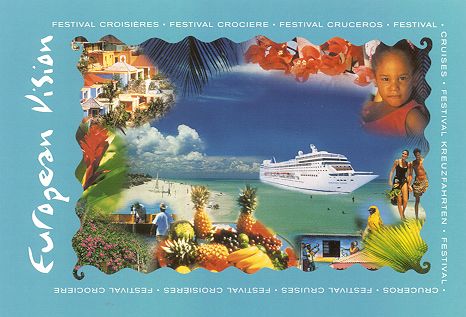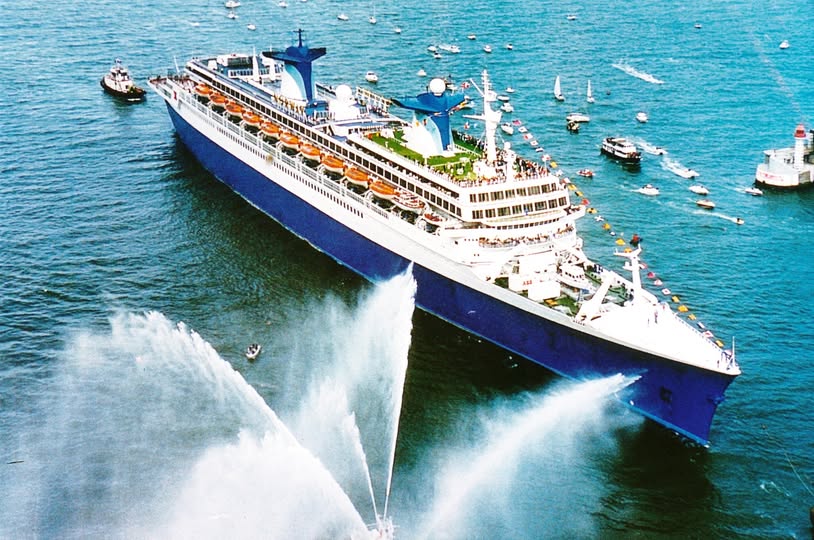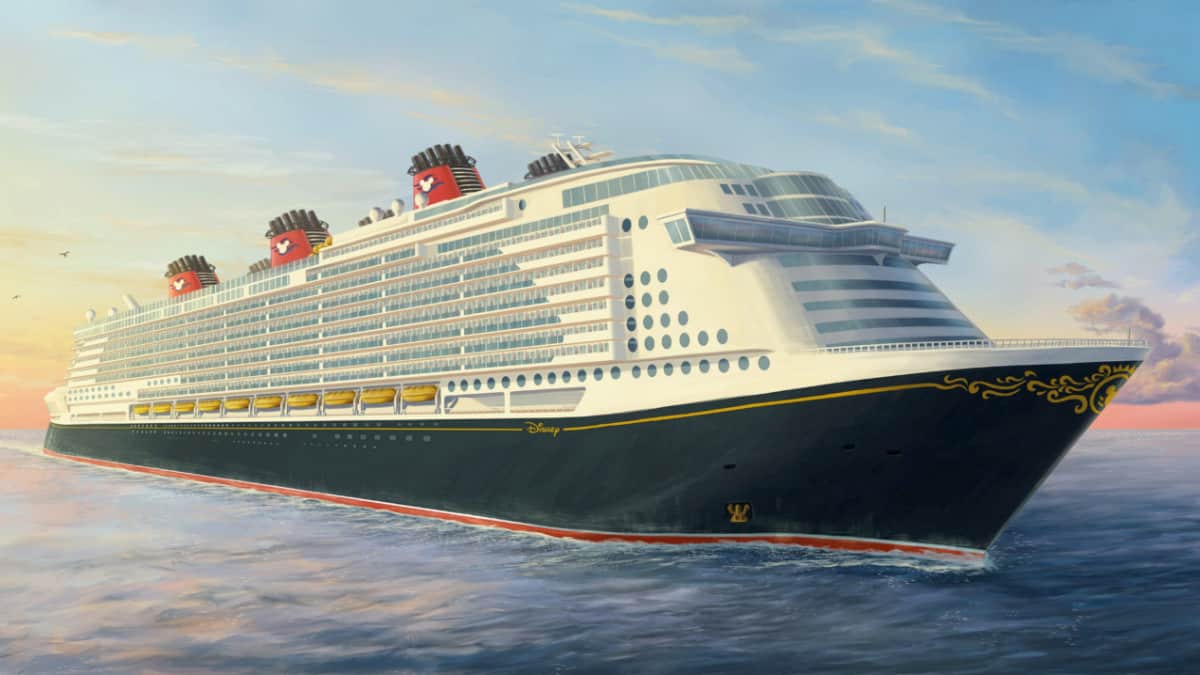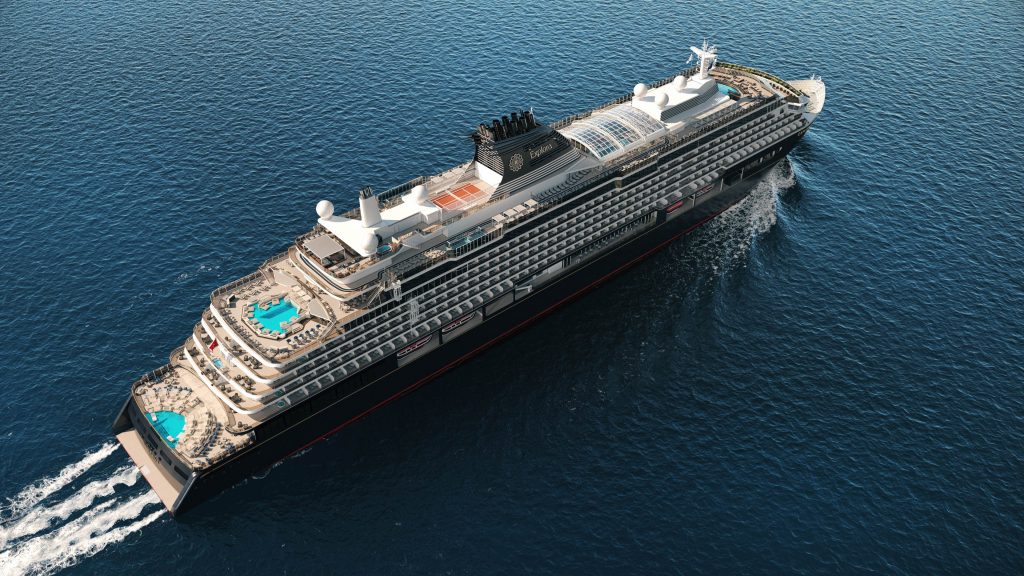
In 1992 George Poulides, the son of Fotis Poulides, who is well-known in the shipping industry as the director of Red Cross Maritime Services during the war, together with some business companions founded Festival Cruises. As their first ship, they acquired the Azur from Chandris Cruises in 1994. At the time, Chandris was busy closing down its Festival brand so it could concentrate on their newly formed luxury division Celebrity Cruises. Azur was followed by Norwegian Cruise Line’s Starward which was renamed Bolero. Their third secondhand vessel was the Flamenco (1972, originally P&O’s Spirit of London acquired in 1998.


During the first few years, Festival Cruises was quite successful and started to think of expanding by ordering newbuildings. In 1999 they ordered the Mistral from the French yard Chantiers de L’Atlantique (famous for having built celebrated liners like the Normandie and France for example) at a cost of $240 million.
The company targeted the European market and wanted to become the pan-European cruise line and with the introduction of their first newbuilding Mistral Festival Cruises tried to position the line at the upper end of the mass-market like Princess and Holland America. Unfortunately, in the United States, the name Festival was considered too similar to Carnival and it was decided that they would operate under the name of First European Cruises there.

Following Mistral, two slightly larger sister ships were ordered for delivery in 2001 and 2002, named European Stars and European Vision. Amongst other improvements they were given more balcony cabins than Mistral. Alas, all three ships were not received all too well, their interiors were a bit dull and Festival – trying to achieve an “overall European atmosphere”- had opted for interior decorations onboard these ships that did not at all make a statement and failed to give their brand a recognizable identity.



In a growing European market, the company now had three new ships and the older ones were chartered out, but not sold yet as an insurance until the new units had proven themselves and the company really had a solid base to expand on. There were options for two additional Mistral class ships, but they were not turned into firm orders. It didn’t take long for MSC Cruises – which were also looking to expand asap – to step in and they became their MSC Lirica and MSC Opera.
In May 2000 UK cruise operator P&O announced plans to take over Festival Cruises for a reported 400 million pounds. The P&O conglomerate already consisted of P&O Cruises, Princess Cruises, Swan Hellenic and Aida at the time. Unfortunately P&O were forced to shelve this plan as their shares’ value had plummeted, which was a problem industry wide at the time.

Meanwhile, Festival Cruises wanted to grow fast and they decided to add another secondhand vessel to their fleet in 2002 It was the Caribe, the former Stockholm that was famous for being the ship that sank the Italian ship of state Andria Doria in 1956. She operated out of Cuba at the time she was acquired and she stayed there, now sailing for Festival under the same name until 2004. After having a long list of owners, at the time of writing (Nov 2021) she is the oldest cruise ship afloat and currently is in the port of Rotterdam, having just been auctioned of to an American business group and waiting to be restored for Lissabon – Maderia cruise service. Caribe has always been the ship “far away” and is often forgotten in the Festival Cruises fleet lists.

In 2003, trying to expand in the US-market by collaborating with a well-known brand, Festival teamed up with the Hilton hotel chain planning to add 25 so called Hilton Suites on their three newer ships. These luxuriously appointed suites would have butler service (butlers trained by Hilton) and would feature several amenities of the Hilton brand.

But this never materialized when in 2004, Festival Cruises found themselves in financial problems because bookings in the (eastern) Mediterranean were at an all time low because of political instability in the region which soon resulted in bankruptcy. Festival was not able to meet its financial obligations, monthly payments to the Alstom yard (the new owners of the former Chantiers de l’Atlantique shipyard) concerning their three newbuildings Mistral, European Stars and European Vision and Alstom had all Festival vessels placed under arrest. It is said Royal Caribbean, which was on the lookout for possible take-over candidates at the time was interested in taking over Festival Cruises but this didn’t materialize.
Festival attempted to start up again after restructuring, only re-activating their newer vessels Mistral, European Stars and European Vision while selling off their older units, but they were not successful and their entire fleet was auctioned off.

MSC acquired their European Stars and European Vision which now joined sister ships Lirica and Opera as Sinfonia and Armonia. French investors took over the the Mistral which they chartered out to Ibero Cruceros, which renamed her Grand Mistral.
In the end this quite successful young company was doing well in general, but in financially difficult times Festival Cruises did not have enough financial reserves to stay afloat, their three newbuilding proving too much of a financial burden for the company to survive…





